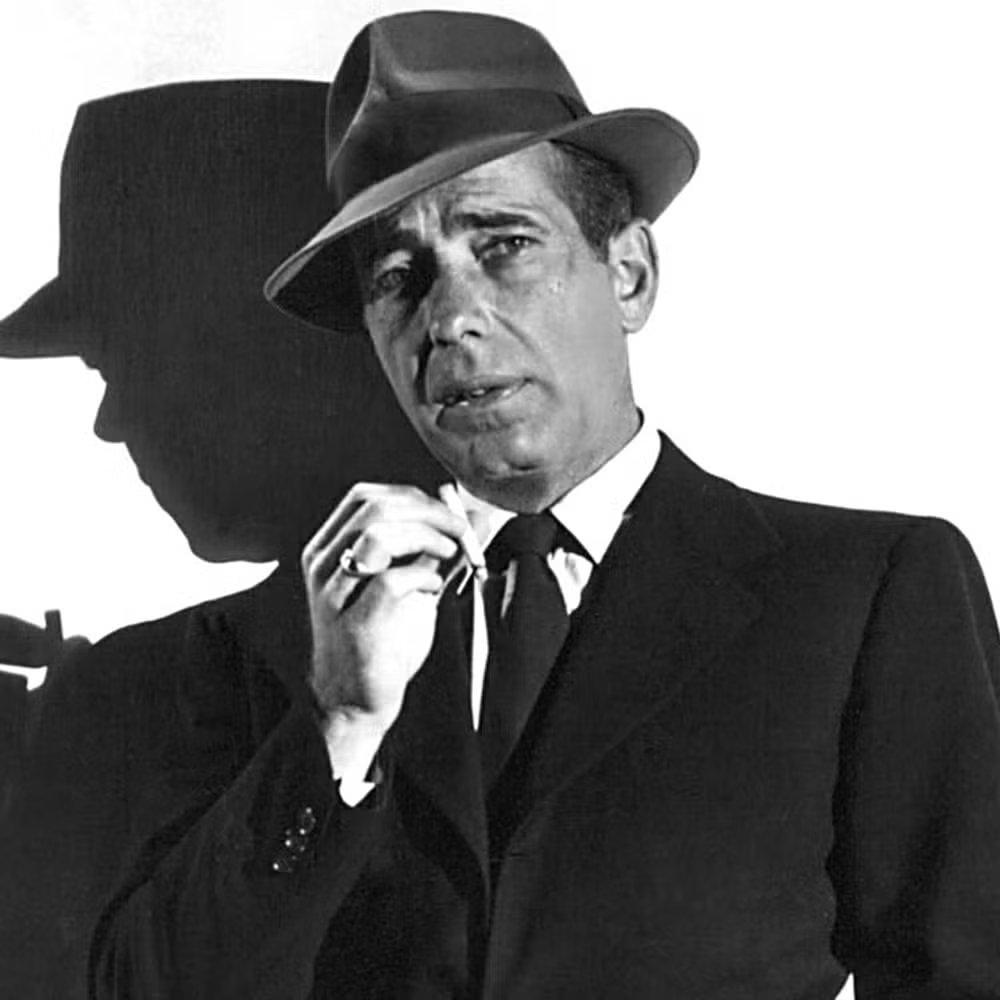
Table of Contents
Who Was Humphrey Bogart?
Humphrey Bogart, one of the most iconic actors in Hollywood history, began his career on Broadway in the 1920s, eventually moving to B-movie roles in 1930s Hollywood. His breakthrough came in the 1940s with starring roles in films such as The Maltese Falcon and Casablanca, which cemented his legacy. Bogart was married several times, with his final marriage to actress Lauren Bacall, a partnership that became one of Hollywood’s most famous.
Early Life
Born in New York City on December 25, 1899, Humphrey DeForest Bogart hailed from a distinguished and affluent family. His father, Belmont DeForest Bogart, was a respected heart surgeon, and his mother, Maud Humphrey, was a renowned artist and artistic director of The Delineator, a prominent women’s fashion magazine. Interestingly, one of Maud’s illustrations of young Bogart as a baby was featured in a national ad campaign, making him briefly famous.
Despite the privilege of his upbringing, Bogart’s relationship with his mother was distant. He spent much of his childhood at the family’s summer retreat on Canandaigua Lake, where he developed lifelong passions for sailing and chess. Academically, Bogart struggled, attending the prestigious Trinity School in New York City and later Phillips Academy in Andover, Massachusetts, where he was eventually expelled.
Military Service
After being dismissed from Phillips Academy, Bogart enlisted in the U.S. Navy during World War I, seeking adventure. During his service, he acquired a scar on his upper lip that became a defining feature of his tough-guy persona in later years. After his honorable discharge in 1919, Bogart returned to civilian life, eventually finding his way into acting.
Hollywood Career
Bogart’s acting journey began modestly, with small stage roles in the early 1920s. His breakout moment came in 1934, with his performance in The Petrified Forest on Broadway. Two years later, he reprised his role in the film adaptation, establishing himself as a talented actor capable of portraying hardened criminals. This led to a series of gangster roles in films such as Dead End (1937) and Crime School (1938).
Bogart’s career took a significant turn when he was cast as Sam Spade in The Maltese Falcon (1941). The success of this film, coupled with his iconic role as Rick Blaine in Casablanca (1942), catapulted him to stardom. Casablanca remains one of the most celebrated films of all time, with Bogart’s portrayal of a world-weary yet honorable expatriate immortalized in cinematic history.
Throughout the 1940s and 1950s, Bogart solidified his reputation as one of Hollywood’s leading men. His role in The African Queen (1951), alongside Katharine Hepburn, earned him an Academy Award for Best Actor. Bogart’s later films, including The Caine Mutiny (1954) and Sabrina (1954), showcased his enduring talent.
Personal Life
Bogart’s personal life was as eventful as his career. He was married four times. His first marriage to actress Helen Menken ended quickly in 1926. His second marriage, to actress Mary Philips, dissolved when Bogart moved to Hollywood. In 1938, he married Mayo Methot, a volatile relationship that earned them the nickname “The Battling Bogarts.” Their marriage ended in 1945, shortly before Bogart married Lauren Bacall, his co-star from To Have and Have Not. Bacall, significantly younger than Bogart, became his lifelong partner, and they had two children together.
Final Years and Death
In 1956, while still active in his career, Bogart was diagnosed with esophageal cancer. Despite surgery, he passed away on January 14, 1957. Though Bogart was already a celebrated actor at the time of his death, his legacy has only grown. In the decades following, his work was reexamined, and he was hailed as one of the greatest actors of all time. In 1999, the American Film Institute named him the greatest male movie star in cinema history. Bogart’s friend and biographer Nathaniel Benchley aptly summed up his legacy: “[Bogart] achieved class through his integrity and his devotion to what he thought was right.”
